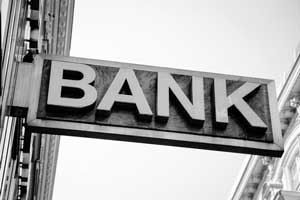Why Didn't Bank Regulators Prevent the Financial Crisis?

This post is part of a series titled “Supervising Our Nation’s Financial Institutions.” The series, written by Julie Stackhouse, executive vice president and officer-in-charge of supervision at the St. Louis Federal Reserve, is expected to appear at least once each month throughout 2017.
A number of observers have questioned whether bank regulators could have prevented the financial crisis of 2008. While many market participants recognized the exuberance of the housing market, other factors contributing to the crisis led to a “perfect storm” that made it difficult for many stakeholders, including regulators, to foresee the impending meltdown.
Excessive Mortgage Debt
Poor assessment of ability to repay and inadequate down payments doomed many mortgages. Insufficient consumer protections resulted in many consumers not understanding the risks of the mortgage products offered.
Dominance of Variable Rate and Hybrid Subprime Mortgages
The spread of variable rate and hybrid subprime mortgages in a low-rate environment created excessive risks when interest rates rose.
Overheated Housing Market
Rapidly increasing house prices encouraged speculation, which further drove up prices. The availability of easy credit caused many borrowers to take on levels of debt they could not afford.
Lack of Market Discipline in Mortgage-Backed Securities Market
Growth in the private mortgage-backed securities market was fueled by lax standards in assigning credit ratings, which hid building systemic risk.
Safety and Soundness Problems at Large Banks
Many large banking firms had insufficient levels of high-quality capital, excessive amounts of short-term wholesale funding and too few high-quality liquid assets. These problems were frequently compounded by inadequate internal risk measurement and management systems.
Risky Behavior by Nonregulated Financial Firms
Sometimes referred to as the “shadow banking system,” this collection of financial firms included insurance companies and captive finance companies, among others. These firms engaged in activities that increased risks inherent in the financial system as a whole without any meaningful regulatory oversight.
Lack of Broad Oversight
Finally, while various regulators oversaw parts of the financial system, there was no one regulator responsible for the consolidated supervision of systemically important financial firms. Moreover, no authority was assigned the responsibility of overseeing systemic risk.
Congress responded to the financial crisis with the passage of the Dodd-Frank Act. Among its many provisions, the Dodd-Frank Act assigned responsibility to the Federal Reserve for the consolidated supervision of bank and nonbank financial holdings companies. It also created the Financial Stability Oversight Council, which is tasked with the responsibility of identifying threats that could destabilize the financial system.
| Financial Stability Oversight Council Membership |
|---|
| Chairperson |
| Secretary of the Treasury |
| Voting Members |
| Chairperson of the Commodity Futures Trading Commission |
| Comptroller of the Currency |
| Chairperson of the Federal Deposit Insurance Corp. |
| Director of the Consumer Financial Protection Bureau |
| Director of the Federal Housing Finance Agency |
| Chairman of the Board of Governors of the Federal Reserve System |
| Independent Member with Insurance Expertise |
| Chairman of the National Credit Union Administration Board |
| Chairman of the Securities and Exchange Commission |
| Nonvoting Members |
| Director of the Federal Insurance Office |
| Director of the Office of Financial Research |
| State Banking Supervisor |
| State Insurance Commissioner |
| State Securities Commissioner |
Is this legislative solution sufficient to prevent another financial crisis? One cannot answer with certainty, given the continuing evolution of the financial system. We can, however, conclude that many of the factors contributing to the financial crisis no longer exist and that our financial system is significantly stronger than prior to the crisis.
Follow the Series
- Why Are Banks Regulated?
- Did the Dodd-Frank Act Make the Financial System Safer?
- Bank Supervision and the Central Bank: An Integrated Mission
- Why Are There So Many Bank Regulators?
Additional Resources
- On the Economy: Building the Foundations of Economic Literacy
- On the Economy: What Is the Informal Labor Market?
- On the Economy: The Growing Skill Divide in the U.S. Labor Market
Citation
Julie L Stackhouse, ldquoWhy Didn't Bank Regulators Prevent the Financial Crisis?,rdquo St. Louis Fed On the Economy, May 22, 2017.
This blog offers commentary, analysis and data from our economists and experts. Views expressed are not necessarily those of the St. Louis Fed or Federal Reserve System.
Email Us
All other blog-related questions

